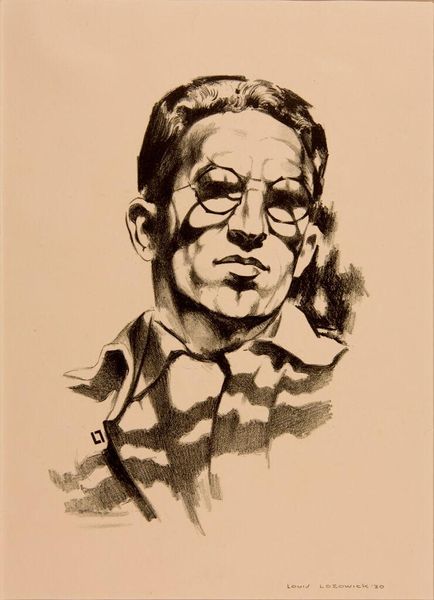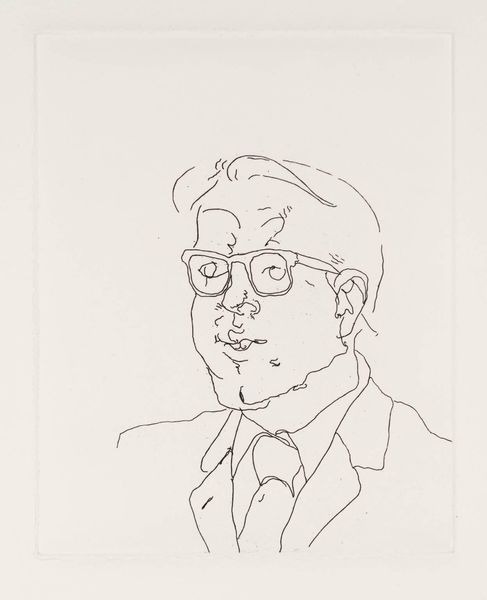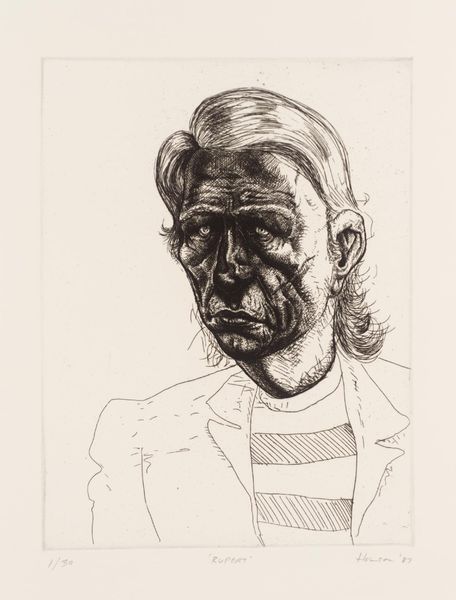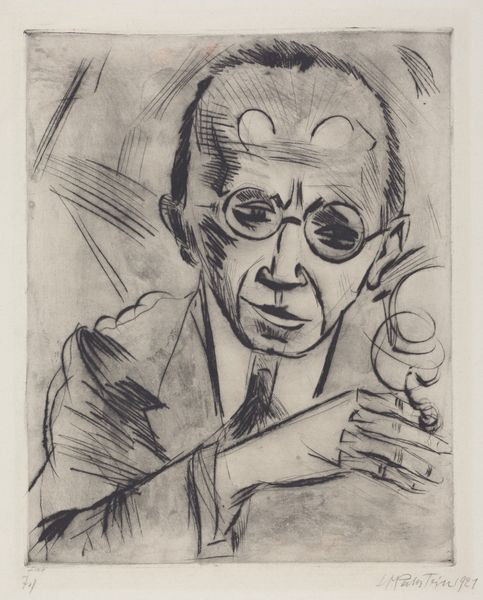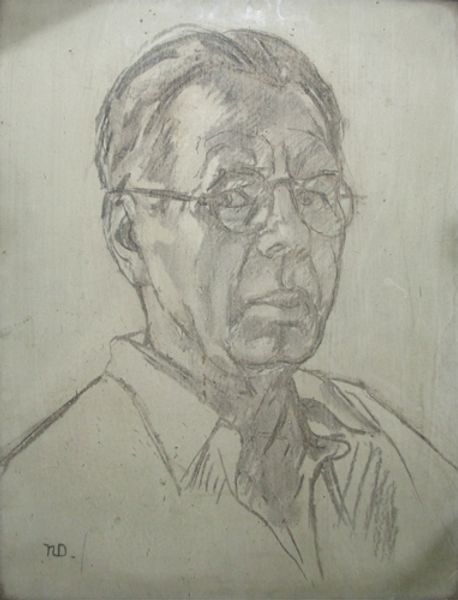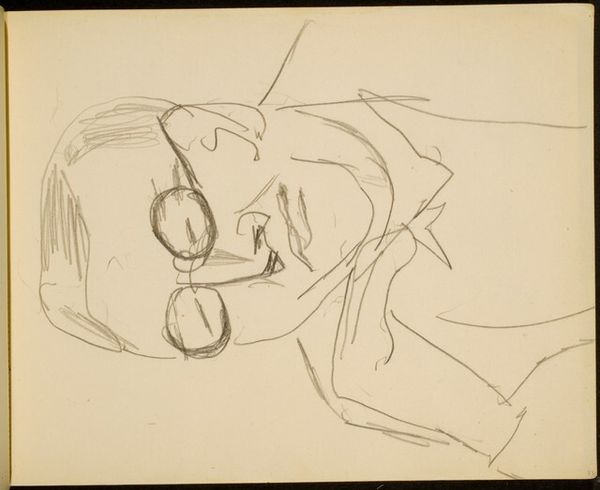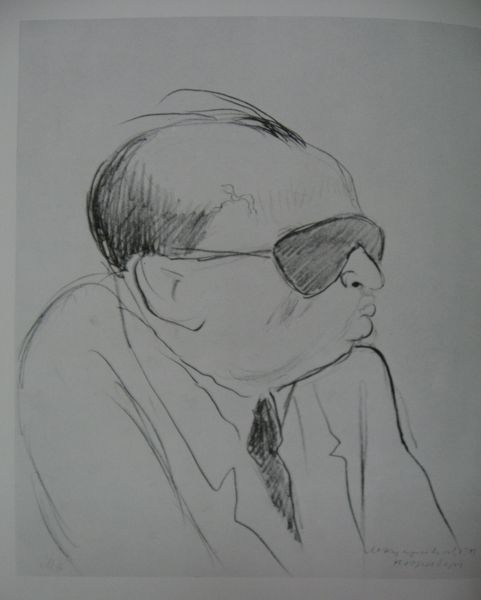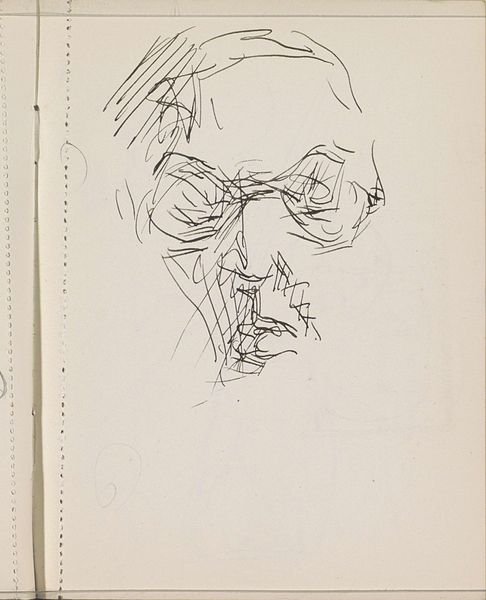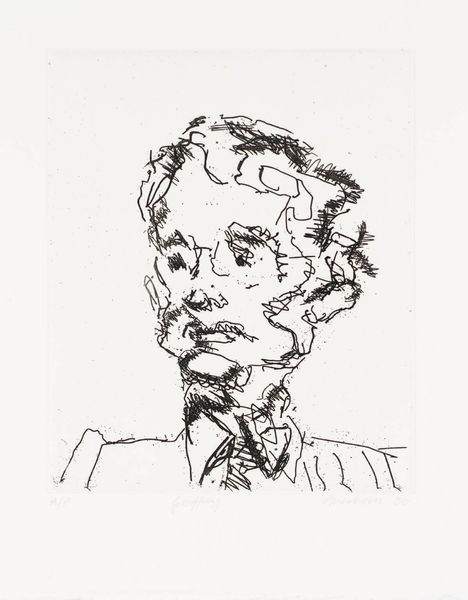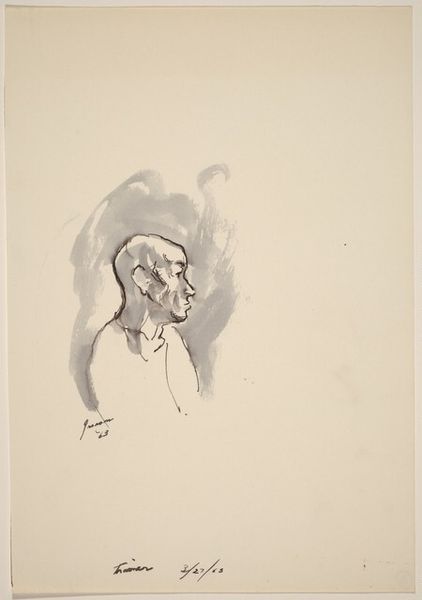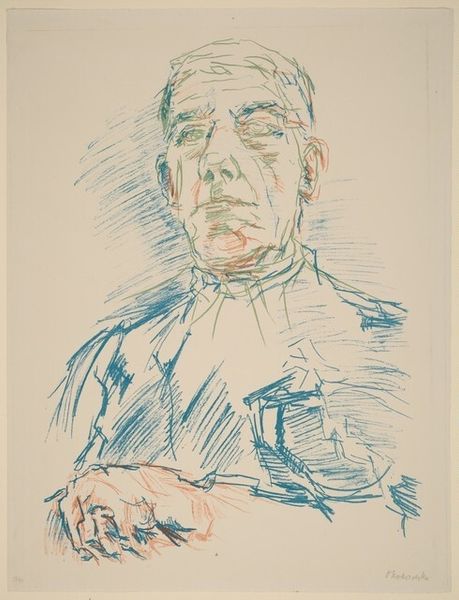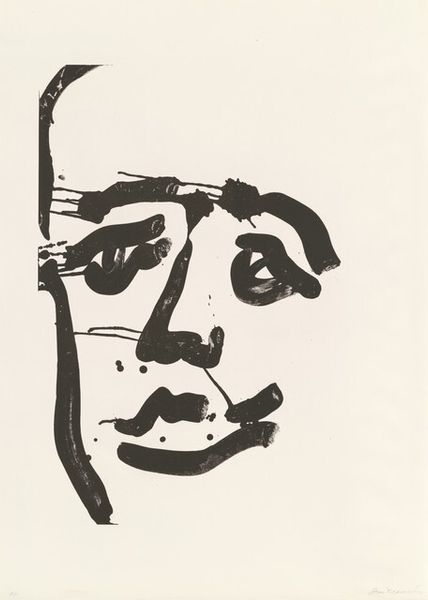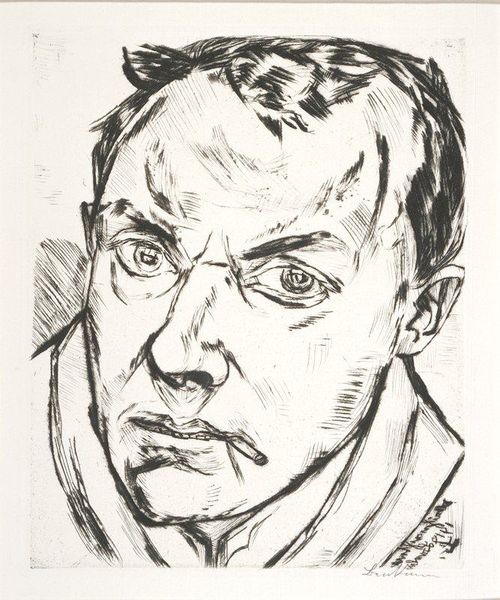
drawing, print, pencil
#
portrait
#
drawing
#
self-portrait
# print
#
pencil drawing
#
pencil
#
portrait drawing
#
modernism
Dimensions: sheet: 40.1 x 29 cm (15 13/16 x 11 7/16 in.)
Copyright: National Gallery of Art: CC0 1.0
Curator: Louis Lozowick's "Self-Portrait," from 1930, rendered in pencil – what do you see when you look at this drawing? Editor: Intensely intellectual, perhaps even burdened by thought. The harsh shadows cast by the glasses really make me consider a shielding away. Curator: Yes! And shielding might be quite relevant when you consider Lozowick's position as a Russian-American artist deeply engaged with social commentary in the early 20th century. One can only imagine the worlds behind those obscured eyes! Editor: Absolutely. Think about the Modernist movement at the time. Many artists explored ideas of alienation, technology's impact, or urban experience in industrialised nations. But, yes, that strong chiaroscuro with these modernist angularities certainly conveys unease. Curator: Lozowick's self-portrait seems introspective rather than triumphant. Do you perceive a subtle vulnerability amidst what might come off as steely gaze? Editor: Precisely! The starkness could speak to Lozowick grappling with issues relevant to him or the role of the artist amidst social upheavals and injustices of the era. I’m also stuck on the formal qualities of the image too – Lozowick has been masterful to execute the contrast in values only with pencil. Curator: Given his leanings towards geometric and mechanical forms, I see the severe lines here as representative of external pressures bearing down upon him, of someone trying to view an extremely skewed vision. This portrait hints at something much more personal—something felt deeply—but ultimately unresolved. Editor: Perhaps even more resonant if you think about this piece produced in the 1930's, the early period of the Great Depression, a period where individual isolation became pronounced amid global economic instability. It gives this image a more powerful subtext when understood this way. Curator: In looking into one's self, what all do we expose about the human experience for better or for worse, huh? Editor: A question of what lies underneath—absolutely central to art and political action.
Comments
No comments
Be the first to comment and join the conversation on the ultimate creative platform.
